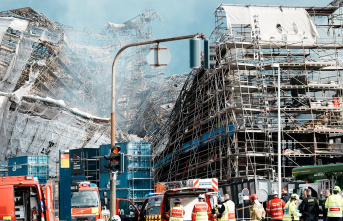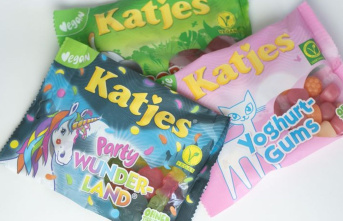Icy winds swept over the rock-framed coastal towns. It snowed and snowed and snowed. No plane took off or landed. Tourists stuck at Keflavík Airport. Driveways were blocked: in mid-December snowstorms raged in Iceland. Unpredictable, unstoppable. My luck: I was there a week before. No wind, no rain, no clouds. Iceland's weather conditions change rapidly and radically - often even every hour. The right clothing, weather check, planning the route: A trip to Iceland should be carefully prepared.
Before I arrived, I studied the little spot on Google Maps almost every day. It was my evening entertainment program. Only around 400 kilometers of Atlantic separate the Westfjords from ice-covered Greenland. This corresponds roughly to the linear distance between Hamburg and Frankfurt. So I thought to myself that it is very cold in the country just below the Arctic Circle, especially in winter. And so I got the right clothes: three thermal leggings, thick teddy hoodies, hats, balaclava and gloves. That was my basic set. In order to identify myself as a tourist - because that is probably in the nature of a German holidaymaker - I also took an Iceland sweater with me.
I knew I wouldn't get far with white sneakers. So warm winter boots were needed. I opted for black lace-up boots with thick soles and a low profile. I loved every step in the sturdy treads. Comfortable and warm – that is the most important thing in Iceland. Grandma's wool socks made my outfit complete.
What should not be missing in the suitcase: bathing suits. Exactly, you heard that right! While I don't recommend swimming on Iceland's beaches - it would be life-threatening in some sections - the many hot springs are a dream. Slippers, towel and bikini flew along in the suitcase on wheels.
Arriving in Iceland, I quickly realized that I wouldn't have gotten very far without warm clothing. The daytime temperature was sometimes minus seven degrees, at night minus 12. Some freezer compartments are similarly cold.
I borrowed a car. My adventure began. I drove past green mountain tops, through black, crumbly lunar landscapes. The otherwise rough nature of the island was surprisingly soft: sunshine, hardly any clouds. But to get safely from A to B, I regularly took a look at the "Safe Travel" app. The app was developed by the Icelandic Ministry of Foreign Affairs. It shows almost all roads including black ice, road closures, storms
There were probably reasons why I read in almost every travel blog that you should get spikes for your shoes. The chains with small stainless steel teeth can be easily slipped over shoes. They provide support on icy paths. I thought it was exaggerated and should be wrong. In Þingvellir National Park I moved like a shy deer next to all the tourists who smiled and overtook me with their spikes. The path led through the gorge over slippery boulders. I didn't manage to slip, but I was walking at a snail's pace. And drenched in sweat.
But what really blew me away were the prices in Iceland. While hotel, rental car and flight costs are lower in winter, food costs remain high. A traditional Icelandic lamb soup costs around 3000 ISK (about 20 euros) in many places - and is the size of a starter soup. Main courses are around 4500 ISK (around 30 euros). Thirsty people pay 400 to 600 ISK (3 to 4 euros) for tea or coffee. The reasons for the high prices: Many products have to be imported. The Atlantic climate and the poor soil make the conditions for agriculture worse. In addition, the wage level is significantly higher than here. My money-saving tip: Use five-minute terrines and thermal mugs!
A kettle was provided in every hotel room. Tea bags were usually free. So I avoided the expensive tea stations in tourist centers and cafes. I took care of myself and developed deep feelings for my practical thermal mug. And then on some days there were five-minute terrines to save money.
Cold, risk, prices - if you accept that, I think you should fly to Iceland in winter. There are significantly fewer tourists than in summer. I had many sights to myself. The many glacier tongues on Vatnajökull - Europe's largest glacier - were deserted.
I drove around the ring road for hours without seeing another car. I also saved a lot of money. And I saw the Northern Lights. This is only possible in the autumn and winter months from October to March. Although it was very cold, the alpine panorama, the hot springs and the impressive nature warmed my heart. In general, if you have the right equipment, you can get through even the deepest Icelandic winter.
This article contains so-called affiliate links. Further information are available here.
Sources: "Safe Travel", "Google Maps", German-Islandic Society Bremerhaven/Bremen e. V.











